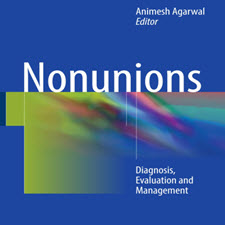The relation between earnings management and financial statement fraud
ABSTRACT
This paper provides new evidence on the characteristics of firms that commit financial statement fraud. We examine how previous earnings management impacts the likelihood that a firm will commit financial statement fraud and in doing so develop three new fraud predictors. Using a sample of 54 fraud and 54 nonfraud firms, we find that fraud firms are more likely to have managed earnings in prior years and that earnings
management in prior years is associated with a higher likelihood that firms that meet or beat analyst forecasts or that inflate revenue are committing fraud. We further find that fraud firms are more likely to meet or beat analyst forecasts and inflate revenue than non-fraud firms are even when there is no evidence of prior earnings management. This paper contributes to the fraud detection literature and the earnings management literature, and can help practitioners and regulators develop better fraud detection models.
INTRODUCTION
The Association of Certified Fraud Examiners (ACFE, 2008) estimates that occupational fraud, or fraud in the workplace, costs the U.S. economy $994 billion per year. Within occupational fraud, financial statement fraud1 has the highest per case cost and total cost to the defrauded organizations, with an estimated total cost of $572 billion per year in the U.S.2 In addition to the direct impact on the defrauded organizations, fraud adversely impacts employees, shareholders and creditors. Financial statement fraud (henceforth fraud) also has broader, indirect negative effects on market participants by undermining the reliability of corporate financial statements and confidence in financial markets, resulting in higher risk premiums and less efficient capital markets. Research about fraud antecedents and detection is important because it adds to the understanding about fraud, which has the potential to improve auditors’ and regulators’ ability to detect fraud either directly or by serving as a foundation to future fraud research that does. Improved fraud detection can help defrauded organizations, and their employees, shareholders, and creditors curb costs associated with fraud, and can also help improve market efficiency. This knowledge
is also of interest to auditors when providing assurance regarding whether financial statements are free of material misstatements caused by fraud, especially during client selection and continuation judgments, and audit planning.
چکیده
این مقاله شواهد جدیدی را در خصوص ویژگی های شرکت هایی که تقلب مالی را انجام می دهند، ارائه می دهد. ما بررسی می کنیم که چگونه مدیریت های درآمد قبلی بر این باورند که یک شرکت تقلب مالی را تحریم می کند و در نتیجه این سه پیش بینی کننده جدید تقلب ایجاد می کند. با استفاده از نمونه 54 کلاهبرداری و 54 شرکت غیرفعال، متوجه می شویم که شرکت های کلاهبرداری احتمالا درآمدشان را در سالهای گذشته مدیریت کرده اند و مدیریت درآمد در سال های گذشته با احتمال بیشتری همراه است که شرکت هایی که پیش بینی های تحلیلگر را رد یا ضعیف می کنند درآمد، تقلب را مرتکب می شوند. ما بیشتر متوجه می شویم که شرکت های تقلب بیشتر احتمال دارد که پیش بینی های تحلیلگران را برآورده یا ضعیف کنند و درآمد را افزایش دهند تا شرکت های بدون تقلب حتی زمانی که شواهدی از مدیریت درآمد قبلا وجود نداشته باشد. این مقاله به ادبیات شناسایی تقلب و ادبیات مدیریت درآمد کمک می کند و می تواند به تمرینکنندگان و تنظیم کننده ها کمک کند تا مدل های تشخیص تقلب را بهتر کنند.
مقدمه
انجمن متقاضیان تقلب خبره (ACFE، 2008) برآورد می کند که تقلب شغلی یا تقلب در محل کار، اقتصاد ایالات متحده 994 میلیارد دلار در سال هزینه می کند. در تقلب شغلی، تقلب مالی 1 بر روی هر مورد و هزینه کل برای سازمان های مظنون، با هزینه کلی تخمین زده شده 572 میلیارد دلار در سال در ایالات متحده 2 بالاتر است. علاوه بر تاثیر مستقیم بر سازمان های متقلب، تقلب ناخوشایند بر کارمندان تاثیر می گذارد ، سهامداران و اعتباردهندگان. تقلب تقلب در مالی (از این پس تقلب) نیز تأثیرات منفی و غیرمستقیم گسترده ای را بر شرکت کنندگان در بازار بوجود آورده است که موجب تضعیف قابلیت اطمینان اظهارات مالی شرکت و اطمینان در بازارهای مالی می شود که منجر به افزایش حق بیمه و بازارهای سرمایه کمتری می شود. تحقیق در مورد پیشگیری ها و شناسایی تقلب مهم است زیرا به فهم تقلب کمک می کند، که این امکان را برای بهبود توانایی حسابرسان و تنظیم کننده ها برای شناسایی تقلب یا به طور مستقیم یا به عنوان پایه ای برای تحقیقات تقلب در آینده انجام می دهد. تشخیص تقلب بهبود یافته می تواند به سازمان های متخلف کمک کند و کارمندان، سهامداران و طلبکاران آنها هزینه های مربوط به تقلب را کاهش می دهند و همچنین می توانند به بهبود کارایی بازار کمک کنند. این دانش همچنین برای حسابرسان در هنگام ارائه اطمینان در مورد اینکه آیا نقاط ضعف مالی ناشی از خیزش های مادی ناشی از تقلب، به ویژه در انتخاب مشتری و تصمیم گیری های تداوم و برنامه ریزی ممیزی، اهمیت دارد.
Year: 2010
Publisher : ELSEVIER
By : Johan L. Perols , Barbara A. Lougee
File Information: English Language/ 15 Page / size: 461 KB
سال : 1389
ناشر : ELSEVIER
کاری از : یوهان پرولس، باربارا ال. لوگی
اطلاعات فایل : زبان انگلیسی / 15 صفحه / حجم : KB 461


![The relation between earnings management and financial statement fraud[taliem.ir]](https://taliem.ir/wp-content/uploads/The-relation-between-earnings-management-and-financial-statement-fraudtaliem.ir_-1.jpg)
![Working Capital Management and Profitability of Firms A[taliem.ir] Working Capital Management and Profitability of Firms A[taliem.ir]](https://taliem.ir/wp-content/uploads/Working-Capital-Management-and-Profitability-of-Firms-Ataliem.ir_.jpg)
![Enhancing the Governance of Government Linked Companies via[taliem.ir] Enhancing the Governance of Government Linked Companies via[taliem.ir]](https://taliem.ir/wp-content/uploads/Enhancing-the-Governance-of-Government-Linked-Companies-viataliem.ir_.jpg)
![Health information systems Failure, success[taliem.ir] Health information systems Failure, success[taliem.ir]](https://taliem.ir/wp-content/uploads/Health-information-systems-Failure-successtaliem.ir_.jpg)

![Endoscopy.in.Obesity.Management.A.Comprehensive.[taliem.ir] Endoscopy.in.Obesity.Management.A.Comprehensive.[taliem.ir]](https://taliem.ir/wp-content/uploads/Endoscopy.in_.Obesity.Management.A.Comprehensive.taliem.ir_.jpg)
![Risk and risk management in management accounting and control[taliem.ir] Risk and risk management in management accounting and control[taliem.ir]](https://taliem.ir/wp-content/uploads/Risk-and-risk-management-in-management-accounting-and-controltaliem.ir_.jpg)
![Handbook.of.Gynecology.[taliem.ir] Handbook.of.Gynecology.[taliem.ir]](https://taliem.ir/wp-content/uploads/Handbook.of_.Gynecology.taliem.ir_.jpg)
![Management.[taliem.ir] Management.[taliem.ir]](https://taliem.ir/wp-content/uploads/Management.taliem.ir_.jpg)

![Effects of the institutional environment on public-private[taliem.ir]](https://taliem.ir/wp-content/uploads/Effects-of-the-institutional-environment-on-public-privatetaliem.ir_-1-150x150.jpg)
![Management Forecasts, Idiosyncratic Risk, and the Information Environment[taliem.ir]](https://taliem.ir/wp-content/uploads/Management-Forecasts-Idiosyncratic-Risk-and-the-Information-Environmenttaliem.ir_-2-150x150.jpg)
دیدگاه خود را ثبت کنید
تمایل دارید در گفتگو شرکت کنید؟نظری بدهید!